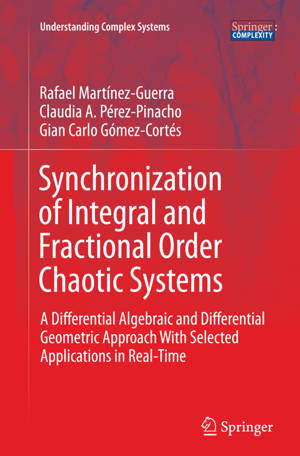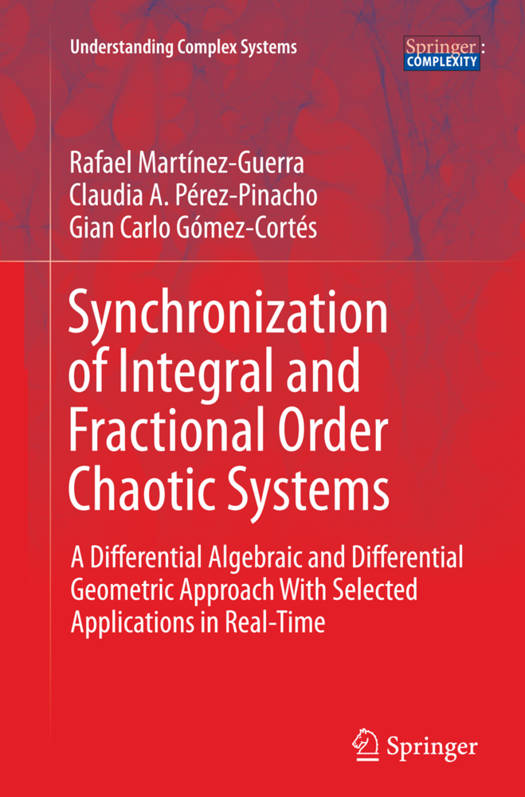
- Afhalen na 1 uur in een winkel met voorraad
- Gratis thuislevering in België vanaf € 30
- Ruim aanbod met 7 miljoen producten
- Afhalen na 1 uur in een winkel met voorraad
- Gratis thuislevering in België vanaf € 30
- Ruim aanbod met 7 miljoen producten
Zoeken
Synchronization of Integral and Fractional Order Chaotic Systems
A Differential Algebraic and Differential Geometric Approach with Selected Applications in Real-Time
Rafael Martínez-Guerra, Claudia A Pérez-Pinacho, Gian Carlo Gómez-Cortés
€ 52,95
+ 105 punten
Uitvoering
Omschrijving
This book provides a general overview of several concepts of synchronization and brings together related approaches to secure communication in chaotic systems. This is achieved using a combination of analytic, algebraic, geometrical and asymptotical methods to tackle the dynamical feedback stabilization problem. In particular, differential-geometric and algebraic differential concepts reveal important structural properties of chaotic systems and serve as guide for the construction of design procedures for a wide variety of chaotic systems. The basic differential algebraic and geometric concepts are presented in the first few chapters in a novel way as design tools, together with selected experimental studies demonstrating their importance. The subsequent chapters treat recent applications. Written for graduate students in applied physical sciences, systems engineers, and applied mathematicians interested in synchronization of chaotic systems and in secure communications, this self-contained text requires only basic knowledge of integer ordinary and fractional ordinary differential equations. Design applications are illustrated with the help of several physical models of practical interest.
Specificaties
Betrokkenen
- Auteur(s):
- Uitgeverij:
Inhoud
- Aantal bladzijden:
- 242
- Taal:
- Engels
- Reeks:
Eigenschappen
- Productcode (EAN):
- 9783319386478
- Verschijningsdatum:
- 9/10/2016
- Uitvoering:
- Paperback
- Formaat:
- Trade paperback (VS)
- Afmetingen:
- 156 mm x 234 mm
- Gewicht:
- 381 g

Alleen bij Standaard Boekhandel
+ 105 punten op je klantenkaart van Standaard Boekhandel
Beoordelingen
We publiceren alleen reviews die voldoen aan de voorwaarden voor reviews. Bekijk onze voorwaarden voor reviews.











